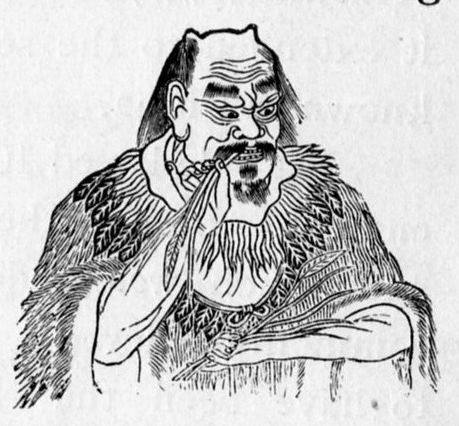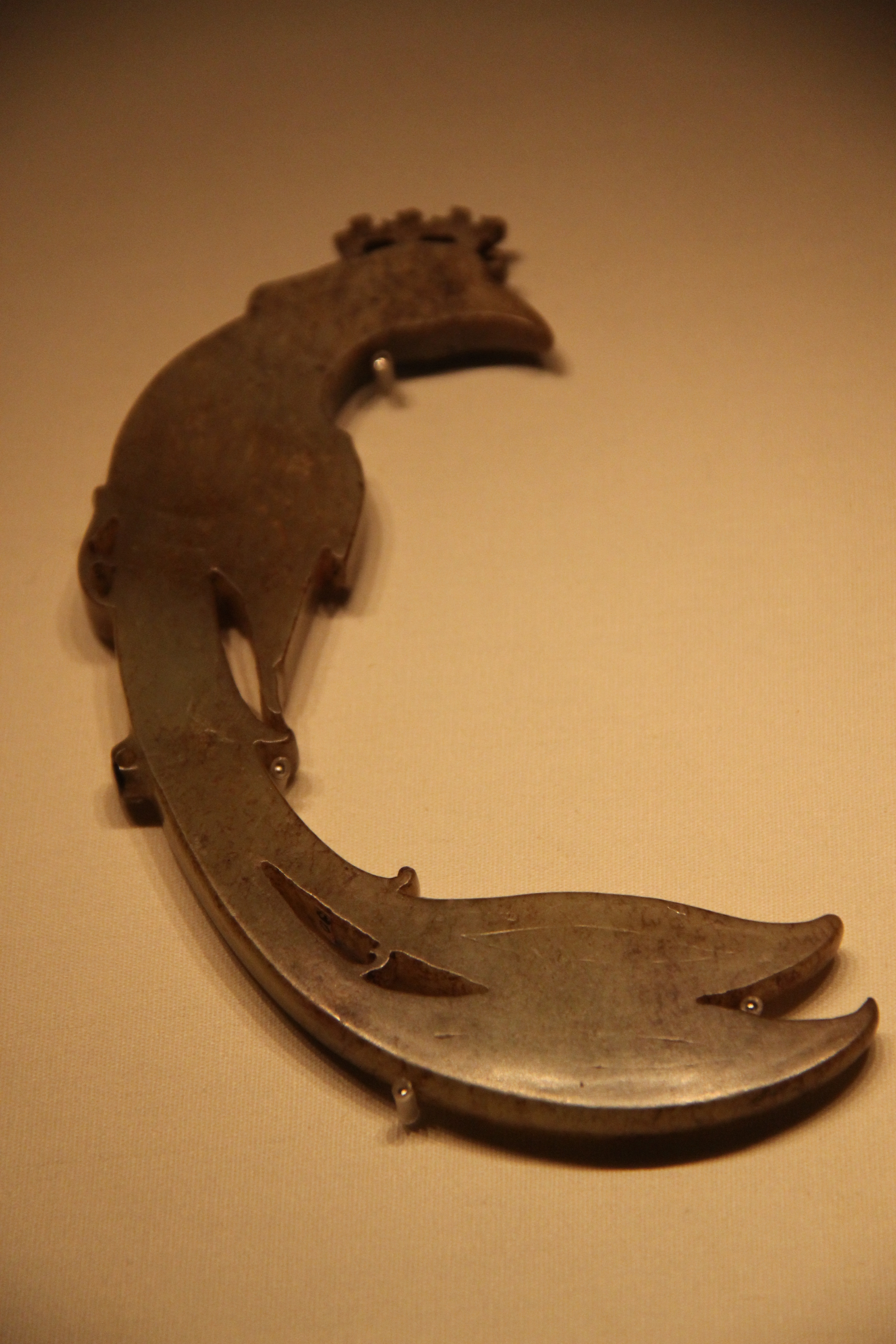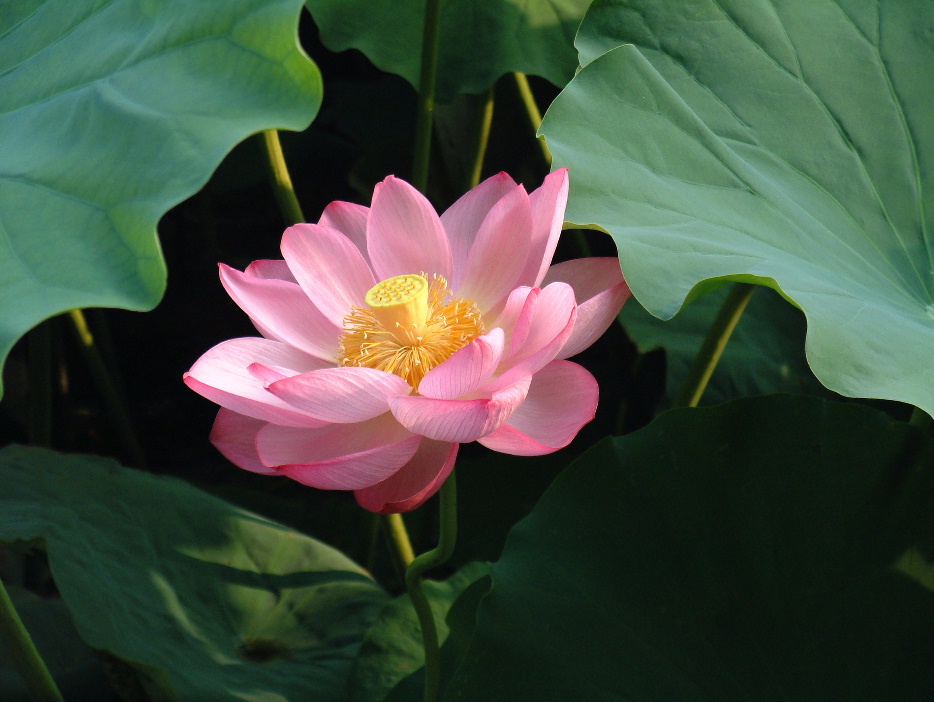|
He Xian'gu
He Xiangu, birth name He Qiong, is a Chinese mythological figure and one of the Eight Immortals in the Taoist pantheon. She is often seen as the only female among the Eight Immortals (though the sex of Lan Caihe, another of the Eight Immortals, is somewhat ambiguous). He Xiangu is believed to have lived in the Tang dynasty and was born in either Lingling District, Yongzhou, Hunan or Zengcheng District, Guangzhou, Guangdong. Legend According to the ''Xian Fo Qi Zong'' (), He Xiangu was the daughter of He Tai (), a man from Zengcheng, Guangdong. At birth, she had six long hairs on the crown of her head. When she was about 14 or 15, a divine personage appeared to her in a dream and instructed her to eat powdered mica so that her body might become etherealised and immune from death. She did as instructed, vowed to remain a virgin, and gradually decreased her food intake. Wu Zetian once sent a messenger to summon He Xiangu to the imperial court, but she disappeared on the way there. ... [...More Info...] [...Related Items...] OR: [Wikipedia] [Google] [Baidu] |
He (surname)
He or Ho is the Romanization, romanized transliteration of several Chinese family names. According to a 2012 survey, 14 million people had Hé (wiktionary:何, 何) listed as their surname, making it the 17th most common surname in Mainland China, a spot it retained in 2019. Hé was listed as the 21st most common surname in the ''Hundred Family Surnames'', contained in the verse 何呂施張 (He Lü Shi Zhang). Other less common family names that are romanized as He include wiktionary:河, 河 (Pinyin: Hé), wiktionary:佫, 佫 (Pinyin: Hè), wiktionary:赫, 赫 (Pinyin: Hè), and 和. A common alternative spelling of the surname is Ho, which is the Standard Mandarin, Mandarin Wade-Giles romanization and the Standard Cantonese, Cantonese romanization of the Chinese family names. In the Korean language, the equivalent surname is Ha (하). In the Vietnamese language, the equivalent surname is Hà. History The surname originates from the Ji (surname), Ji clan of the Zhou Dynasty ... [...More Info...] [...Related Items...] OR: [Wikipedia] [Google] [Baidu] |
Bigu (grain Avoidance)
''Bigu'' () is a Daoist fasting technique associated with achieving ''xian'' "transcendence; immortality". Grain avoidance is related to multifaceted Chinese cultural beliefs. For instance, ''bigu'' fasting was the common medical cure for expelling the ''sanshi'' "Three Corpses", the malevolent, grain-eating spirits that live in the human body (along with the hun and po souls), report their host's sins to heaven every 60 days, and carry out punishments of sickness and early death. Avoiding "grains" has been diversely interpreted to mean not eating particular foodstuffs (food grain, cereal, the Five Grains, ''wugu'', or staple food), or not eating any food (inedia). In the historical context of traditional Chinese culture within which the concept of ''bigu'' developed, there was great symbolic importance connected with the five grains and their importance in sustaining human life, exemplified in various myths and legends from ancient China and throughout subsequent history. The conc ... [...More Info...] [...Related Items...] OR: [Wikipedia] [Google] [Baidu] |
Chinese Goddesses
Chinese traditional religion is polytheistic; many deities are worshipped in a pantheistic view where divinity is inherent in the world. The gods are energies or principles revealing, imitating and propagating the way of Heaven (''Tian'' ), which is the supreme godhead manifesting in the northern culmen of the starry vault of the skies and its order. Many gods are ancestors or men who became deities for their heavenly achievements; most gods are also identified with stars and constellations. Ancestors are regarded as the equivalent of Heaven within human society, and therefore as the means connecting back to Heaven, which is the "utmost ancestral father" ( ''zēngzǔfù''). Gods are innumerable, as every phenomenon has or is one or more gods, and they are organised in a complex celestial hierarchy. Besides the traditional worship of these entities, Confucianism, Taoism and formal thinkers in general give theological interpretations affirming a monistic essence of divinity. "Pol ... [...More Info...] [...Related Items...] OR: [Wikipedia] [Google] [Baidu] |
List Of Jackie Chan Adventures Characters
This is a list of characters from the animated television series ''Jackie Chan Adventures''. Protagonists Main cast * Jackie Chan (voiced by James Sie in animated sequence; as himself for live-action sequences): The primary protagonist of the series. The fictionalized version for each episode's story is defined as a talented archaeologist who lives in San Francisco, and who maintains the same level of martial art expertise as the real-life actor. A common element in the character's portrayal in the series is a constant notion of feeling pain in his hands when defending himself, utilization of a variety of different objects and elements when in combat, and being placed in awkward situations he is forced to escape from, drawn from inspiration by films starring the actor. In the live-action sequences, the real-life Jackie Chan faces various questions issued by young fans, primarily children, about his life, career, and insight on Chinese culture. * Jade Chan (voiced by Stacie C ... [...More Info...] [...Related Items...] OR: [Wikipedia] [Google] [Baidu] |
Jackie Chan Adventures
''Jackie Chan Adventures'' is an American animated television series, created by John Rogers, Duane Capizzi and Jeff Kline, and produced by Sony Pictures Television (originally as Columbia TriStar Television for the first three seasons). The cartoon series premiered on September 9, 2000, and ran for five seasons until its conclusion on July 8, 2005. The series focuses on a fictionalized version of Hong Kong action film star Jackie Chan, who operates in life as an archaeologist and special agent, combatting threats that are mainly magical and supernatural based on real-life mythologies and supernatural stories from Asia and around the world with the aid of his family and close friends. Many of the episodes created for ''Jackie Chan Adventures'' featured references to Chan's actual works, with the actor making live-action appearances in the form of an interview situation, answering questions about his life and work. The series was aired in the United States on Kids' WB, with re- ... [...More Info...] [...Related Items...] OR: [Wikipedia] [Google] [Baidu] |
Fly-whisk
__NOTOC__ A fly-whisk (or fly-swish) is a tool that is used to swat flies. A similar gadget is used as a hand fan in hot tropical climates, sometimes as part of regalia, and is called a ''chowrie'', ''chāmara'', or ''prakirnaka'' in South Asia and Tibet. In Indonesian art, a fly-whisk is one of the items that is associated with Shiva. A fly-whisk is frequently seen as an attribute of Hindu, Jain, Daoist and Buddhist deities. The fly-whisk is evident in some configurations of the Ashtamangala, employed in some traditions of murti puja, particularly Gaudiya Vaishnavism. It is also used as an accessory in the ritual aspects of folk performance traditions, especially folk-theater forms like Pala Gaan, where it can double as a prop. Fly-whisks are in use in parts of the contemporary Middle East, such as Egypt, by some classes of society, ''e.g.'', outdoor merchants and shop keepers, especially in summer when flies become bothersome. Those have a wooden handle and plant fibers attache ... [...More Info...] [...Related Items...] OR: [Wikipedia] [Google] [Baidu] |
Fenghuang
''Fènghuáng'' (, ) are mythological birds found in Sinospheric mythology that reign over all other birds. The males were originally called ''fèng'' and the females ''huáng'', but such a distinction of gender is often no longer made and they are blurred into a single feminine entity so that the bird can be paired with the Chinese dragon, which is traditionally deemed male. It is known under similar names in various other languages ( Japanese: ; vi, phượng hoàng, italics=no or ; Korean: ). In the Western world, it is commonly called the Chinese phoenix or simply phoenix, although mythological similarities with the Western phoenix are superficial. Appearance A common depiction of fenghuang was of it attacking snakes with its talons and its wings spread. According to the ''Erya'''s chapter 17 ''Shiniao'', fenghuang is made up of the beak of a rooster, the face of a swallow, the forehead of a fowl, the neck of a snake, the breast of a goose, the back of a tortoise ... [...More Info...] [...Related Items...] OR: [Wikipedia] [Google] [Baidu] |
Sheng (instrument)
The ( zh, c=笙) is a Chinese mouth-blown polyphonic free reed instrument consisting of vertical pipes. It is one of the oldest Chinese instruments, with images depicting its kind dating back to 1100 BCE, and there are original instruments from the Han dynasty that are preserved in museums today. Traditionally, the has been used as an accompaniment instrument for solo or performances. It is one of the main instruments in and some other forms of Chinese opera. Traditional small ensembles also make use of the , such as the wind and percussion ensembles in northern China. In the modern large Chinese orchestra, it is used for both melody and accompaniment. The has been used in the works of a few non-Chinese composers, including Unsuk Chin, Jukka Tiensuu, Lou Harrison, Tim Risher, Daníel Bjarnason, Guus Janssen and Christopher Adler. Some believe that Johann Wilde and Pere Amiot traveled to China and brought the first to Europe in 1740 and 1777 respectively, although th ... [...More Info...] [...Related Items...] OR: [Wikipedia] [Google] [Baidu] |
Sacred Lotus In Religious Art
The lotus, ''Nelumbo nucifera'', is an aquatic plant that plays a central role in the art of Indian religions such as Hinduism, Buddhism, Jainism and Sikhism. In Asian art a lotus throne is a stylized lotus flower used as the seat or base for a figure. It is the normal pedestal for divine figures in Buddhist art and Hindu art, and often seen in Jain art. Originating in Indian art, it followed Indian religions to East Asia in particular. Hinduism Hindus revere it with the divinities Vishnu and Lakshmi often portrayed on a pink lotus in iconography; historically, many deities, namely Brahma, Saraswati, Lakshmi, Kubera, usually sit on a stylized lotus throne. In the representation of Vishnu as Padmanabha (Lotus navel), a lotus issues from his navel with Brahma on it. The goddess Saraswati is portrayed on a pale pink lotus. The lotus is the symbol of what is divine or immortal in humanity, and also symbolizes divine perfection. The lotus is the attribute of sun and fire gods. I ... [...More Info...] [...Related Items...] OR: [Wikipedia] [Google] [Baidu] |
Liexian Zhuan
The ''Liexian Zhuan'', sometimes translated as ''Biographies of Immortals'', is the oldest extant Chinese hagiography of Daoist ''xian'' "transcendents; immortals; saints; alchemists". The text, which compiles the life stories of about 70 mythological and historical ''xian'', was traditionally attributed to the Western Han dynasty editor and imperial librarian Liu Xiang (77–8 BCE), but internal evidence dates it to the 2nd century CE during the Eastern Han period. The ''Liexian Zhuan'' became a model for later authors, such as Ge Hong's 4th century CE '' Shenxian zhuan'' ("Biographies of Divine Immortals"). Title ''Liexian Zhuan'' combines three words: *''liè'' (, "rank; array; order; line up; list") * ''xiān'' (, "transcendent being; celestial being; 'immortal'") *''zhuàn'' (, " tradition; biography; commentary on a classic (e.g., '' Zuozhuan'')"(—cf. ''chuàn'' (, "transmit; pass along; hand down; spread") The compound ''lièzhuàn'' (, lit. "arrayed lives") is a Classic ... [...More Info...] [...Related Items...] OR: [Wikipedia] [Google] [Baidu] |
Emperor Zhongzong Of Tang
Emperor Zhongzong of Tang (26 November 656 – 3 July 710), personal name Li Xian, and at other times Li Zhe or Wu Xian, was the fourth Emperor of the Tang dynasty of China, ruling briefly in 684 and again from 705 to 710. During the first period, he did not rule, and the entire power was in the hands of his mother, Empress Wu Zetian and he was overthrown on her orders after opposing his mother. In the second reign period, most of the power was in the hands of his beloved wife Empress Wei. Emperor Zhongzong was the son of Emperor Gaozong of Tang and Empress Wu (later known as Wu Zetian), and during the reign of his father, Emperor Zhongzong's mother Empress Wu, not Emperor Gaozong, was in actual control of power as empress consort and power behind the emperor. He succeeded his father in 684, But as emperor, he had no true power, and all authorities remained in the firmly hands of his mother, Empress Dowager Wu. His mother, however, deposed him less than two months later in fa ... [...More Info...] [...Related Items...] OR: [Wikipedia] [Google] [Baidu] |
Wu Zetian
Wu Zetian (17 February 624 – 16 December 705), personal name Wu Zhao, was the ''de facto'' ruler of the Tang dynasty from 665 to 705, ruling first through others and then (from 690) in her own right. From 665 to 690, she was first empress consort of the Tang dynasty (as wife of the Emperor Gaozong) and then, after his death, empress dowager (ruling through her sons Emperors Zhongzong and Ruizong). Unprecedented in Chinese history, she subsequently founded and ruled as empress regnant of the Wu Zhou dynasty of China from 690 to 705. She was the only female sovereign in the history of China widely regarded as legitimate. Under her 40-year reign, China grew larger, becoming one of the great powers of the world, its culture and economy were revitalized, and corruption in the court was reduced. She was removed from power in a coup and died a few months later. In early life, Wu was the concubine of Emperor Taizong. After his death, she married his ninth son and successor, ... [...More Info...] [...Related Items...] OR: [Wikipedia] [Google] [Baidu] |






